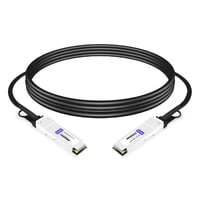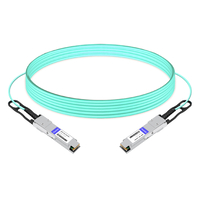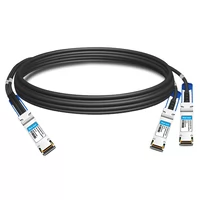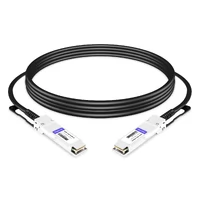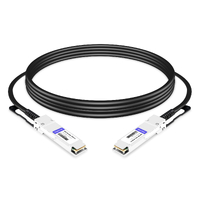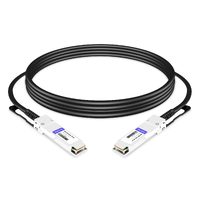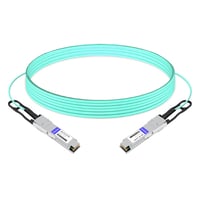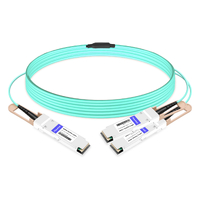Mellanox cables are essential in high-performance networking to ensure effective data transmission and connection. The aim of this detailed guide is to give readers a deep understanding of Mellanox cables, their types, specifications, and their use in different networking settings. We will look into the technological advancements behind these cables as well as the advantages they bring regarding speed and reliability, among others. In addition, best practices for deployment and maintenance will be discussed. This document should provide IT managers, networking professionals, or even just interested persons with enough knowledge on how to deal with complicated products from Mellanox used by today’s data centers.
Table of Contents
ToggleWhat Are Mellanox Cables?
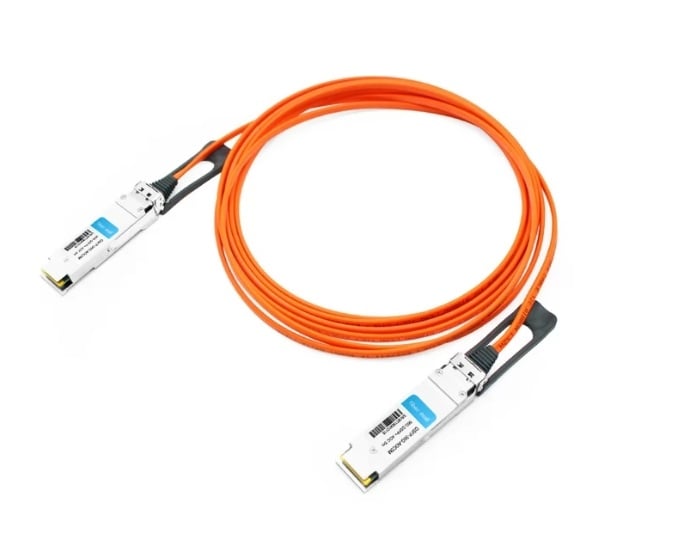
Defining Mellanox Cables
Mellanox cables are networking cables that deliver superior performance and are made for data centers as well as high-performance computing (HPC) environments. They use cutting-edge technologies like InfiniBand and Ethernet to connect devices together at lightning-fast speeds. There’s a wide range of these cables, including copper, optical, and others capable of supporting different bandwidths over varying distances. Among the most important specifications are low latency and high throughput, which makes them ideal for applications where reliable, efficient connectivity is required.
Common Uses of Mellanox Cables
Mellanox cables are an important part of various industries that require fast data transfer and low latency. Some common uses include:
- Data Center Connectivity: These cables are widely used in data centers to connect servers, storage devices, and switches. They support high bandwidths such as 100Gbps, which helps improve data flow and operational efficiency.
- High-Performance Computing (HPC): In places where computing power is vital, like scientific research, simulations, and financial modeling, Mellanox cables facilitate ultra-fast communication among compute nodes. InfiniBand technology can be used in these environments, leading to significantly reduced job processing times due to its superior performance and efficiency.
- Cloud Computing: The emergence of cloud services has increased the need for reliable, fast networking solutions. Mellanox Cables form the backbone of cloud infrastructure, ensuring seamless connectivity and optimal performance for file storage services, analytics application hosting, etc.,
- Telecommunications: In the telecom industry, base stations are connected by these cables with data centers offering low latency and high reliability required voice transmission data.
- Machine Learning and AI Applications: Machine learning and AI frameworks often require massive datasets to be processed in real-time, making it necessary for them to use Mellanox cable, which provides enough bandwidth for ingestion processing in ML and AI applications.
Organizations can achieve better throughput and lower latency by using Mellanox wires here; this will help them stay ahead in today’s competitive world driven by data. Quantitative studies have shown that deploying these cables results in a performance increase of up to 40% in high-bandwidth environments, demonstrating their efficacy in overall system enhancement.
Advantages of Using Mellanox Cables
- High Bandwidth and Low Latency: Mellanox cables are made for high bandwidth applications that deliver data at speeds that can be higher than conventional Ethernet connections. This high performance is complemented with low latency essential for time-sensitive applications like financial trading and cloud computing.
- Scalability: These cables are very scalable, and hence, they can be used in a wide range of environments, from small data centers to large cloud infrastructures. Their flexibility allows companies to increase their network capacity without having to rewrite the entire system.
- Improved Reliability: Mellanox cables have improved reliability due to advanced error correction and intelligent cable diagnostics. The features built into them guarantee minimal downtime and continuous service which is critical for mission-critical applications.
- Energy Efficiency: Energy efficiency has been designed into these cables so that power consumption levels in data centers go down. It reduces operational costs while also supporting sustainability initiatives by decreasing the ecological footprint of HPCs (high-performance computing).
- Innovative Technologies: By using cutting-edge technologies such as InfiniBand, Mellanox wires enable efficient data transport across different environments. In places where large-scale processing and real-time analytics are important, this feature becomes particularly useful.
How Do Mellanox Optical Cables Work?
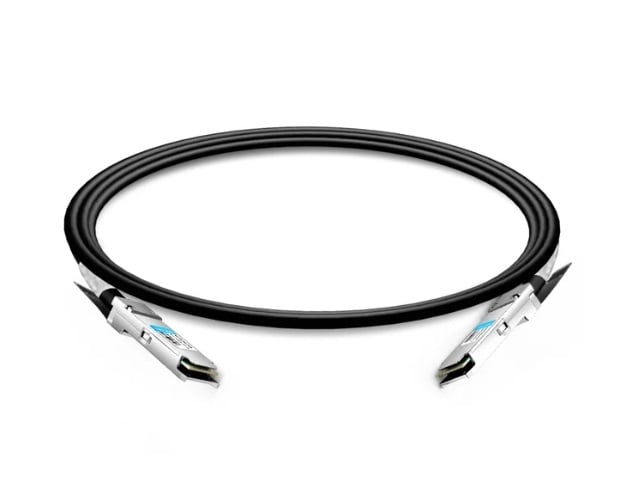
Introduction to Optical Cables
Optical cables work by sending information through light pulses rather than electric signals. Thin strands of glass or plastic, known as optical fibers, are used to guide the light along their length. The data is encoded in these light pulses, enabling fast transmission over long distances with little loss. Compared to traditional copper wires, optical cables are not affected by electromagnetic interference and have better signal integrity. They also have higher bandwidth capacity, which makes them suitable for telecommunications and internet services that require quick and reliable data transfer.
Active Optical Cable Technology
Active optical cables (AOC) combine electrical components with optical fibers to improve data transmission capabilities. At both ends of these cables, there are integrated transceivers that allow electric signals to be converted into light signals and vice versa. This allows faster transfer of information over distances greater than those achieved by conventional copper wires, making them suitable for heavy data applications like data centers, high-performance computing, and video broadcasting, among others. Also, compared to their copper counterparts, AOCs tend to be lighter in weight as well as more flexible thus simplifying installation and management within complex networking environments. The ability to support lower latency and higher bandwidths further strengthens the position of AOCs as a critical element in contemporary communication infrastructure for information systems.
Setting Up Your Optical Cables
These are the steps to install optical cables efficiently:
- Get the Right Fiber Type: You need to know if your application requires single-mode or multi-mode optical fiber. Use single-mode fibers for long-distance communication and multi-mode fibers for short distances.
- Prepare Installation Environment: Ensure that there is no electromagnetic interference in the installation area and it has enough ventilation. This helps keep optical signals safe.
- Connect Cables: Connect optical wires carefully into their respective device ports. To reduce signal loss, make sure connectors are clean and tight. Use dust caps when not using ports to avoid contamination.
- Test Connections: Check if everything was installed correctly by testing with an optical power meter or an Optical Time Domain Reflectometer (OTDR). Additionally, verify that the strength of the signal meets standards required.
- Cable Management: Use cable trays or ties to organize and secure cords together during this stage which will prevent any damage from occurring as well as ease future maintenance/upgrades on them.
To get more from your investment in optics infrastructure, follow our recommended practices around installation management!
What are the Differences Between Various Mellanox Cables?
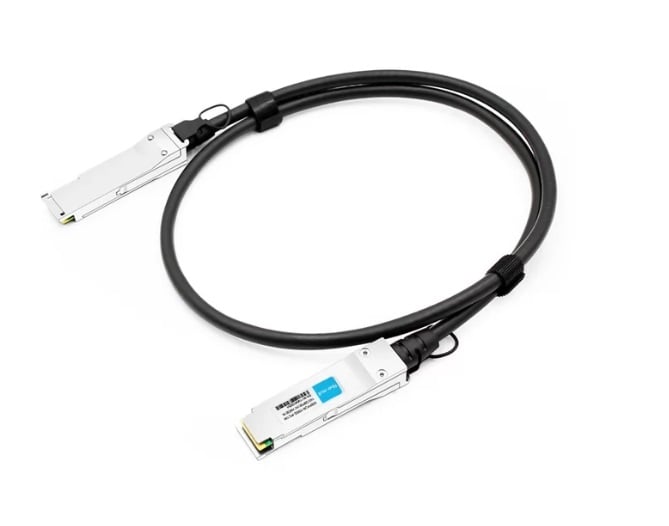
Comparing Twinax and Copper Cables
Twinax cables versus traditional copper cables: there are a few technical aspects that need to be considered. Twinax cables consist of two conductors and they transmit high-speed data over short distances. This makes them suitable for use in data centers and high performance computing applications. Standard copper cables like Cat 5e or Cat 6, on the other hand, are used for general networking tasks but may not perform well at higher data rates.
Performance Specifications:
- Data Rate: The type and length of Twinax cable determines whether it can handle up to 25 Gbps or even 40 Gbps; however, traditional copper usually supports only one gigabit per second over long distances while reaching ten gigabits per second over short distances (up to fifty-five meters for Cat six A).
- Distance Limitations: Depending on application-specific requirements and equipment involved in its installation process, Twinax is effective between seven meters to fifteen meters. In comparison, copper cable can go much further with one gigabit per second being transmitted by cat six over one hundred meters while supporting ten gigabits per second for the same distance with cat six A.
- Signal Integrity: Due to their shielding, which reduces crosstalk as well as electromagnetic interference, Twinax often has better signal integrity than standard copper wires that still experience interference despite improved shielding technologies, especially where there’s a lot of electromagnetic activity around them.
Applications:
High-frequency data applications such as InfiniBand networks mainly use twin axes, whereas standard Ethernet connections remain common among different types of environments where installation distances exceed the capabilities of twin axes.
Cost Considerations:
In terms of pricing, twin ax has a higher initial cost compared to standard copper but when you think about its performance benefits plus more efficient energy use down the line, then total ownership costs might even out.
Environmental factors include performance requirements and distance constraints among others therefore making it hard to determine which one is better between twin ax and copper cables.
The Role of Direct Attach Cables
Direct Attach Cables (DACs) are a key part of high-speed connections. They help link devices in data centers and network environments economically and efficiently. DACs can be made out of copper or fiber optic components, which allow for direct connection between network switches, servers, and storage devices, thereby reducing latency while improving bandwidth use. This simplicity enables quick deployment with reduced cable complexity; its length options vary from centimeters to meters making it flexible enough to adapt to different rack layouts or distances involved. In addition, DAC’s built-in transceiver technology ensures reliable signal transmission suitable for high-frequency applications like 10G, 40G, or even 100GEthernet networks. All in all, direct attachment cables play an important role in enhancing the performance of networks and operational efficiency within modern IT infrastructure setups.
An Overview of Passive vs. Active Optical Cables
Passive optical cables (POCs) and active optical cables (AOCs) are two different approaches to optical interconnects with unique properties for various uses. POCs have no electronic components in the fiber, relying only on light transmission for data transfer. Their simplicity reduces costs and power consumption, thus making them suitable choices over shorter distances – usually up to 100 meters. AOCs include integrated electric components that actively control signal propagation instead. As a result, they can cover longer distances, exceeding 100 meters, while achieving higher data rates and improved signal performance at an additional cost of increased complexity and power usage. The final decision between POC or AOC will largely depend on specific operational requirements such as distance, performance expectations, and budget limits within any networking environment.
How to Choose the Right Mellanox Cables?
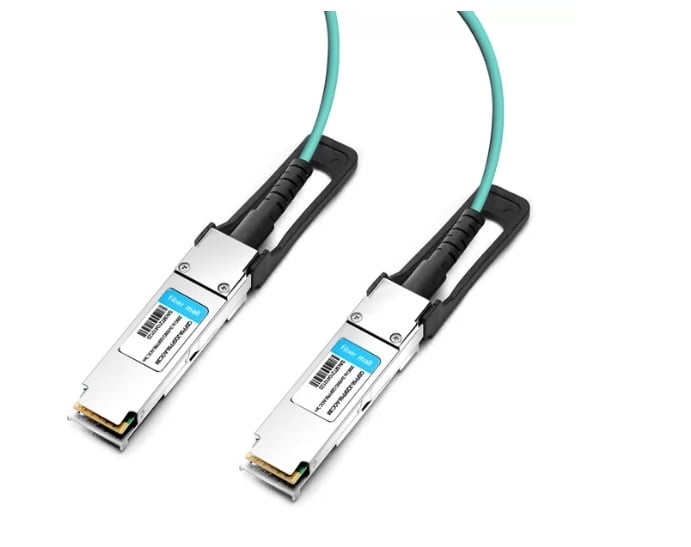
Factors to Consider: Length and Type
It is important to think about the length of Mellanox cables that are needed for a specific installation. For short distances, Passive Optical Cables (POCs) may be appropriate, while longer runs over 100 meters should use Active Optical Cables (AOCs) so as not to compromise signal integrity. Cable type also plays a role; choose POCs if you want something more affordable and with lower power consumption, or go with AOCs when higher data rates over greater distances are required. In order to maximize performance it is essential that compatibility with current network infrastructure is checked first.
Cost vs. Performance
It is important to weigh the cost versus performance of Mellanox cables against initial investment and operating efficiency. POCs are a less expensive option for applications with medium performance needs over short distances due to lower upfront costs and power consumption. On the other hand, AOCs are usually integrated with electronics, so they may be pricier initially; however, they offer better quality at faster data transfer rates across longer distances, which can justify their higher price tag in areas where speed or accuracy matters most. In the end, it comes down to network requirements as far as how much money you have available now versus what your long-term goals will be. Both financial and technical factors must be taken into consideration before deciding on anything specific.
Where to Buy Mellanox Cables
When sourcing Mellanox cables, several online platforms that can be trusted provide various options.
- Mellanox Technologies Official Website: For all Mellanox products, this website is the main source and offers the most recent models with guarantees of genuineness. It also has extensive specs, including maker’s support.
- Amazon: Many sellers on Amazon have made it possible for customers to access Mellanox cables at relatively low prices. For instance, there are reviews and ratings given by buyers about different products.
- Newegg: This website mainly targets tech enthusiasts and typically sells a variety of Mellanox cables at discounted prices. Newegg has user reviews coupled with technical specification thus is suitable for knowledgeable purchasers.
Visit these sites for pricing and availability information tailored to your needs in order to make an informed choice based on the most precise choices.
What Are the Installation and Maintenance Tips for Mellanox Cables?
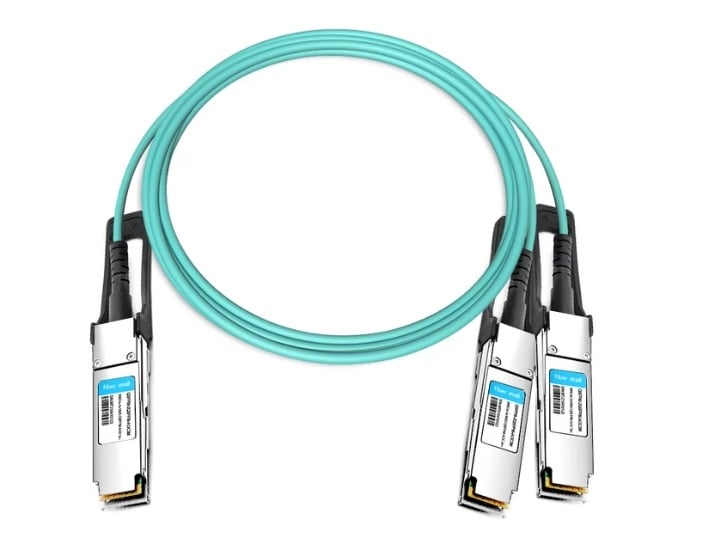
Proper Installation Techniques
To install Mellanox cables, follow these procedures to ensure that they are working at their best.
- Cable Routing: Cables should be run away from any source of electromagnetic interference, like fluorescent lighting or motors, which can cause some signal disturbances.
- Avoid Bending: Keep the cable’s minimum bending radius, as per the product documentation to avoid loss of signal quality; this is usually 4-8 times the diameter of the cable.
- Secure Connections: Intermittent connections may be avoided by appropriately fastening and using connectors.
- Test Integrity: Carry out a continuity test with a network cable tester after connecting your system, ensuring that it works properly before being put into use.
- Labeling: During maintenance and troubleshooting process in future it will be easier to identify both ends of the cables if they are clearly labeled.
Routine Maintenance Practices
The following routine maintenance practices can be put into place to make sure that Mellanox cables last longer and work better:
- Regular Inspections: Cables should be checked regularly for signs of wear, damage or fraying. Check for kinks, cuts and abrasions that may affect performance.
- Cleaning Connectors: Make sure that connectors are kept clean and free from dust or other contaminants. Use a soft, lint-free cloth to gently wipe both the cable connectors as well as the ports.
- Environmental Monitoring: Especially in data centers where temperature and humidity levels need to be controlled; excess heat or moisture can negatively impact on cable functioning therefore it is important to ensure proper environmental conditions are maintained around them at all times.
- Cable Management: To avoid tangling and stress cables should be organized properly. In order to keep cables neat and secure you can use cable ties or trays.
- Performance Testing: Periodically perform tests on your equipment so you can check if there are any errors present. In addition, assessing link integrity will help determine whether signal quality meets the required standards.
By incorporating these practices into your daily activities, you will significantly increase the lifespan of Mellanox cables while ensuring they remain reliable throughout their entire life span when used within a networked environment.
Exploring Advanced Mellanox Cable Products
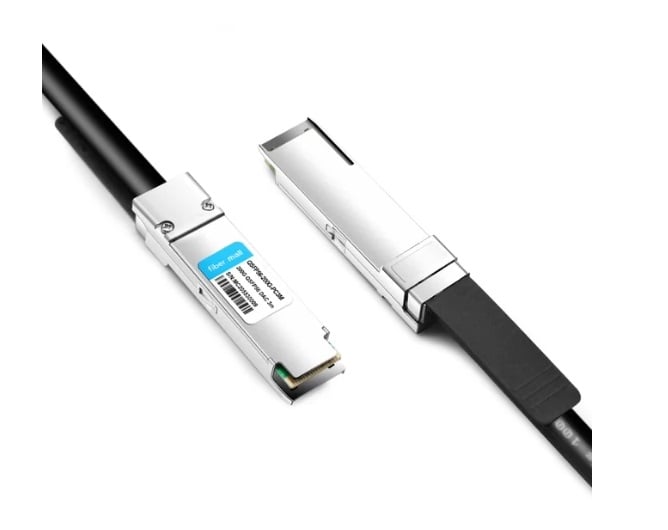
Latest in NVIDIA Passive Copper Technology
Passive copper cables from NVIDIA are built for fast data transfer with low power consumption. These cables support different data rates, such as 100Gbps and above, making them suitable for more efficient networking solutions in data centers. Also, the use of copper makes these cables lightweight, thus simplifying installation and management processes. Furthermore, signal integrity is maintained over long distances due to compatibility with many devices by NVIDIA’s passive copper technology. Their reliability and performance in mission-critical applications are backed by ongoing improvements in materials and engineering practices.
The Future of Infiniband Cables
Infiniband cables will continue to evolve for increased bandwidth and lower latency in high-performance computing environments. Future developments are likely to concentrate on optical interconnect technologies that can increase data transmission rates while reducing electromagnetic interference. In addition, materials science advances may result in lighter, more flexible cable designs which would make them easier to install and scale within complicated configurations. Furthermore, enhanced error correction algorithms coupled with improved signal processing approaches will be essential in boosting reliability as well as the performance of connections between these cables or devices linked through them, such as server clusters based on cloud computing platforms where workloads are getting heavier day by day thus necessitating the use of faster networking solutions like InfiniBand.
Innovations in Active Fiber Technology
High-speed data transmission is being transformed by active fiber technology, which embeds electronic parts in optical fibers. This configuration allows signals to be amplified and regenerated over long distances without deterioration. Some recent developments include small-scale, low-power amplifiers that enable real-time data processing within the fiber itself, thus minimizing external equipment requirements. In addition, dynamic wavelength management innovations have made it possible to configure networks flexibly so as to optimize available bandwidth usage. These technologies are crucial for building strong and scalable network infrastructures capable of meeting the ever-increasing needs of data centers and cloud services as demand for higher data rates continues on an upward trend.
Reference Sources
Frequently Asked Questions (FAQs)
Q: What is a QSFP28 cable, and how is it used?
A: Commonly used in data centers, the QSFP28 (Quad Small Form-factor Pluggable 28) is a high-speed transceiver that works with 100GbE. It supports fast data transfers and can work with different types of fiber cabling as well as direct-attach copper cables.
Q: What are the advantages of using a breakout cable?
A: Breakout cables such as those connecting QSFP to multiple SFP allow one high-speed connection to be shared among several lower speed connections. They help maximize port utilization and simplify network cabling in data centers.
Q: How do I choose between fiber cable and twinax cable?
A: Twinax cables — which are basically direct attach copper cables — work best for short distances while fiber optic cables are perfect for long ones because they have less signal loss over distance.
Q: Is a 3m passive direct attach copper cable suitable for my needs?
A: A 3m passive direct attach copper (DAC) cable is typically used for short-range connections within a data rack or cabinet. It offers performance/cost balance for short-distance connections like those in a data center.
Q: What should I consider when buying patch cords?
A: When choosing patch cords, take into account things such as type (fiber or copper), length (1 m, 5 m etc.), compatibility with your networking equipment among others. For instance, if you need to connect devices that are close together within the same cabinet then use DACs not longer than two meters.
Q: What exactly is an AOC, and when do you use it?
A: An Active Optical Cable (AOC) is a fiber optic cable that has transceivers built into the connectors. It’s used for high-speed data transfers over longer distances than direct-attach copper cables, making it appropriate for data centers needing connections beyond 5 meters.
Q: In what ways does a QSFP56 cable differ from a QSFP one?
A: The standard version of QSFP can only support up to 40GbE or 100GbE, but an enhanced type called “QSFP56” can handle double that at least – which makes this latter one ideal even in HPC environments where throughput needs are extremely high.
Q: Where would you use to directly attach a copper twinax cable?
A: Direct attach copper twinax cables are often used to connect server racks and storage systems within close proximity across adjacent racks in data centers with short distances between them, over high speed links that operate at low power consumption levels.
Q: What does “Mellanox compatible” mean regarding these cables?
A: When something is described as being “Mellanox compatible,” it means that particular cable or transceiver works well with Mellanox® machinery ensuring its best performance under such conditions while maintaining compatibility throughout all other components involved throughout the whole network built around this brand name equipment.
Q: Which types of fiber patch cords exist?
A: Fiber patch cords can be classified into different categories based on their construction materials, i.e. OM3/OM4 multi-mode varieties among others, used to link various parts within computer networks but also come in several lengths ranging between half a meter up to fifty meters plus depending on specific requirements needed by users.
Related Products:
-
 NVIDIA(Mellanox) MCP1650-H003E26 Compatible 3m (10ft) Infiniband HDR 200G QSFP56 to QSFP56 PAM4 Passive Direct Attach Copper Twinax Cable
$80.00
NVIDIA(Mellanox) MCP1650-H003E26 Compatible 3m (10ft) Infiniband HDR 200G QSFP56 to QSFP56 PAM4 Passive Direct Attach Copper Twinax Cable
$80.00
-
 NVIDIA(Mellanox) MC220731V-005 Compatible 5m (16ft) 56G FDR QSFP+ to QSFP+ Active Optical Cable
$80.00
NVIDIA(Mellanox) MC220731V-005 Compatible 5m (16ft) 56G FDR QSFP+ to QSFP+ Active Optical Cable
$80.00
-
 NVIDIA(Mellanox) MCP7H50-H003R26 Compatible 3m (10ft) Infiniband HDR 200G QSFP56 to 2x100G QSFP56 PAM4 Passive Breakout Direct Attach Copper Cable
$75.00
NVIDIA(Mellanox) MCP7H50-H003R26 Compatible 3m (10ft) Infiniband HDR 200G QSFP56 to 2x100G QSFP56 PAM4 Passive Breakout Direct Attach Copper Cable
$75.00
-
 NVIDIA(Mellanox) MC220731V-015 Compatible 15m (49ft) 56G FDR QSFP+ to QSFP+ Active Optical Cable
$89.00
NVIDIA(Mellanox) MC220731V-015 Compatible 15m (49ft) 56G FDR QSFP+ to QSFP+ Active Optical Cable
$89.00
-
 NVIDIA(Mellanox) MC2206130-00A Compatible 50cm (1.6ft) 40G QDR QSFP+ to QSFP+ Passive Copper Direct Attach Cable
$16.00
NVIDIA(Mellanox) MC2206130-00A Compatible 50cm (1.6ft) 40G QDR QSFP+ to QSFP+ Passive Copper Direct Attach Cable
$16.00
-
 NVIDIA(Mellanox) MC220731V-020 Compatible 20m (66ft) 56G FDR QSFP+ to QSFP+ Active Optical Cable
$95.00
NVIDIA(Mellanox) MC220731V-020 Compatible 20m (66ft) 56G FDR QSFP+ to QSFP+ Active Optical Cable
$95.00
-
 NVIDIA(Mellanox) MCP1600-E00AE30 Compatible 0.5m InfiniBand EDR 100G QSFP28 to QSFP28 Copper Direct Attach Cable
$25.00
NVIDIA(Mellanox) MCP1600-E00AE30 Compatible 0.5m InfiniBand EDR 100G QSFP28 to QSFP28 Copper Direct Attach Cable
$25.00
-
 NVIDIA(Mellanox) MCP1600-E001E30 Compatible 1m InfiniBand EDR 100G QSFP28 to QSFP28 Copper Direct Attach Cable
$25.00
NVIDIA(Mellanox) MCP1600-E001E30 Compatible 1m InfiniBand EDR 100G QSFP28 to QSFP28 Copper Direct Attach Cable
$25.00
-
 NVIDIA(Mellanox) MC220731V-050 Compatible 50m (164ft) 56G FDR QSFP+ to QSFP+ Active Optical Cable
$125.00
NVIDIA(Mellanox) MC220731V-050 Compatible 50m (164ft) 56G FDR QSFP+ to QSFP+ Active Optical Cable
$125.00
-
 NVIDIA(Mellanox) MFS1S50-V005E Compatible 5m (16ft) 200G QSFP56 to 2x100G QSFP56 PAM4 Breakout Active Optical Cable
$485.00
NVIDIA(Mellanox) MFS1S50-V005E Compatible 5m (16ft) 200G QSFP56 to 2x100G QSFP56 PAM4 Breakout Active Optical Cable
$485.00

